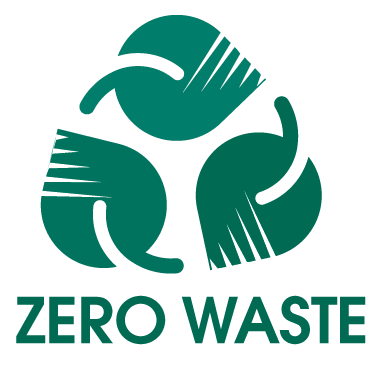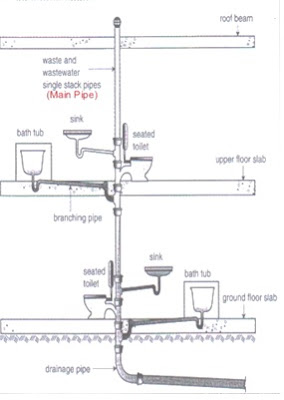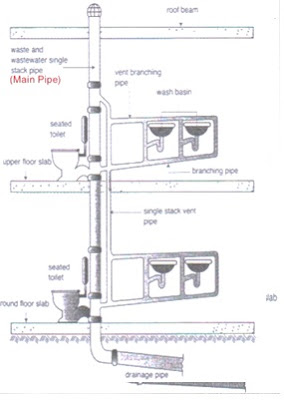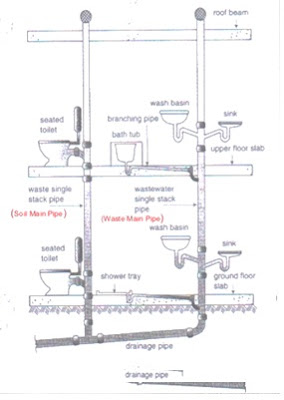
Every
day, tonnes of waste are being dumped at various landfill sites. All wastes are
come from residential, agriculture and so on. If waste is not treated properly,
it will produce unpleasant smell which will affect the surrounding and human
health.
SOLID AND LIQUID WASTES
Source: Google
image.
SOLID WASTE - Solid wastes include solid portions of the
discarded material such as glass bottles, crockeries, plastic containers,
metals and radioactive wastes. The solid wastes may be biodegradable or
non-biodegradable. The biodegradable solid wastes are agricultural wastes, food
wastes, paper, food processing by products, manure, yard wastes etc. The
non-biodegradable wastes include plastic, metals, synthetic materials, radioactive
waste etc.
The solid waste management involves disposal of solid waste to land (or ocean) or recovering and reproducing useful substances from the waste through recycling.
The entire methodology of solid waste management is based on:
The solid waste management involves disposal of solid waste to land (or ocean) or recovering and reproducing useful substances from the waste through recycling.
The entire methodology of solid waste management is based on:
·
Collection of Waste
·
Disposal
·
Resource recovery
Collection of Waste:
The
solid wastes are usually collected by a covered truck.
Disposal of Waste:
After
the collection of wastes, the wastes are disposed of by any one of the methods
as follows:
·
Dumping
·
Sanitary landfills
·
Incineration
·
pyrolysis
·
Composting
·
Bio gas technology etc
Resource recovery
(Recycling):
By
the process of recycling, a number of useful products can be obtained from the
solid wastes.
Some important products obtainable from solid wastes are described below:
Some important products obtainable from solid wastes are described below:
·
Waste papers and cardboards from sugar cane bagasse can be used
for the preparation of unbreakable dolls, packing cardboards etc.
·
Metals can be recycled from the industrial scrap.
·
Waste glasses can be used for the preparation of new glass
bottle.
·
Electricity can be generated through incineration.
Source:
Google image.
LIQUID WASTE - Liquid wastes are the liquid part of the waste material.
Liquid waste includes effluents of industries, fertiliser and pesticide
solutions from agricultural fields, leachate from landfills, urban runoff of
untreated waste water and garbage, mining wastes etc. The liquid waste may
contain nontoxic inorganic substances or toxic organic substances.
TYPE OF SOLID
WASTE
1) Residential
Residences and homes where people live are some of the major sources of solid waste. Garbage from these places include food wastes, plastics, paper, glass, leather, cardboard, metals, yard wastes, ashes and special wastes like bulky household items like electronics, tires, batteries, old mattresses and used oil. Most homes have garbage bins where they can throw away their solid wastes in and later the bin is emptied by a garbage collecting firm or person for treatment.
Source:
Google image.
2) Agriculture
Crop farms, orchards, dairies, vineyards and feedlots are also sources of solid wastes. Among the wastes they produce include agricultural wastes, spoiled food, pesticide containers and other hazardous materials.
Source:
Google image.
3) Commercial
Commercial facilities and buildings are yet another source of solid waste today. Commercial buildings and facilities in this case refer to hotels, markets, restaurants, go downs, stores and office buildings. Some of the solid wastes generated from these places include plastics, food wastes, metals, paper, glass, wood, cardboard materials, special wastes and other hazardous wastes.
Source:
Google image.
4) Construction
Construction sites and demolition sites also contribute to the solid waste problem. Construction sites include new construction sites for buildings and roads, road repair sites, building renovation sites and building demolition sites. Some of the solid wastes produced in these places include steel materials, concrete, wood, plastics, rubber, copper wires, dirt and glass.
Source:
Google image.
SOLID WASTE MANAGEMENT IN MALAYSIA
Source: Google image.
Solid
waste is one of the three major environmental problems in Malaysia. It plays a
significant role in the ability of Nature to sustain life within its capacity.
Currently, over 23,000 tonnes of waste is produced each day in Malaysia.
However, this amount is expected to rise to 30,000 tonnes by the year 2020. The
amount of waste generated continues to increase due to the increasing
population and development, and only less than 5% of the waste is being
recycled.
Despite the massive amount and complexity of waste produced,
the standards of waste management in Malaysia are still poor. These include
outdated and poor documentation of waste generation rates and its composition,
inefficient storage and collection systems, disposal of municipal wastes with
toxic and hazardous waste, indiscriminate disposal or dumping of wastes and
inefficient utilization of disposal site space.
Source: The Maze of Building Team
Waste management is a systematic interaction in various activities involving waste generation, storage, waste collection, waste transportation, waste treatment and waste disposal.
1. Storage
Solid waste generated is stored temporarily by the waste generators near to its generation point. On a normal basis, the waste is packed using small or medium plastic bags before discharging into a big garbage bag. Solid waste is kept outside of the premises in a bin, until it is then collected by the waste collectors.
2. Collection & Transportation
This stage is the crucial part in solid waste management system. Local authorities may opt to outsource the service. Three concession companies have been appointed which are the Alam Flora Sdn. Bhd (central area), SMW Environment Sdn Bhd (southern area), and E-Idaman Sdn Bhd (northern area).
3. Treatment & Disposal
Solid wastes are collected by collector vehicles before being sent to transfer station for treatment and compaction. Segregation of the recyclables is practiced as an informal activity in Malaysia. Wastes are then compacted to reduce its size before disposal as all the landfill has its maximum capacity for wastes.
SOLID WASTE DISPOSAL SYSTEM
When considering the system to be employed for the collection of refuse, there are three points to be considered:
- the nature of the waste (either it is perishable or not)
- the nature of the premises that generate the waste (industrial, commercial or domestic)
- the location of the point of generation (height from ground, and position of the floor layout)
1.
Simple Storage & direct collection
Bins
The most traditional
system to collect the waste disposal.
(souces: https://www.homedepot.com)
Self-standing plastic
sacks
This
system is considerable as a hygienic way to collect the solid waste disposal.
(sources: TheBinCompany)
Paladin
Large capacity which
consists collecting vehicles to ease the workers while collecting the waste
from it.
(sources: http://our.haringey.gov.uk/reports)
Refuse Chute
It is constructed of a
large diameter pipes and always use in the buildings which is more than 4
storeys.
(sources: Waste Management Chute System)
2.
On site treatment of waste before collection
Volume reduction systems: A. Waste compaction
Garbage
compactors and waste collection vehicles compress waste so that more of it can
be stored in the same space.
(sources: ecowaste)
Volume reduction systems: B. Shredding of waste
Shredding of waste is
common practice across almost all areas of the waste industry. Far
from focusing simply on paper, shredding is
a disposal technique for everything from agricultural to
household waste and electrical to industrial waste.
(Sources: https://waste-management-world.com/a/italian-collaboration-leads-to-waste-shredder-sales-for-untha)
Volume of reduction system: C. Baled
waste
Baled
waste means converting the wastes into a more stable form or into a different
physical state by chemical, thermal or biological means.
Incineration
Incinerating is a waste treatment process that involves the combustion of organic substances
contained in waste materials. Incineration which coupled with high temperature
waste treatments are categorized as thermal treatment.
3. Pipeline collection system
Food
waste disposal grinders
The
grinder is fitted under the sink, reduces the food waste to fine particles
which can carried away by the wastewater system. The grinder works with an
amount of tap water to pulverize the materials.
(Sources: http://spmgroup.info/kitchen-sink-grinder)
Pneumatic
waste collection system
Pneumatic
waste system is also known as Automated Collection System (AWCS), transports
refuse by vacuum in underground pipes offering a solution to match the
evolutionary process of moving infrastructure below the ground.
(Sources: https://www.youtube.com/watch?v=WpksoxFHg5


METHODS OF DISPOSAL IN MALAYSIA
1. Open dumps landfills
Source: Stuff You Should Know
There are different level of sanitary landfill system, namely level 0 (Open Dumpsite), Level 1 (Controlled tipping), Level 2 ( Sanitary Landfill with Daily Cover), Level 3 (Sanitary Landfill with Leachate Recirculation System), and Level 4 (Sanitary Landfill with Leachate Treatment Facilities and more). However, sadly in Malaysia, in Johor state alone, only 2 out of 14 landfill dumpsites are sanitary landfills.
2. Composting
Composting of waste is an aerobic method of decomposing solid wastes, involving the decomposition of organic waste into humus known as compost. Industrial composting systems are increasingly being installed as a waste management alternative to landfills, along with other advanced waste processing systems.
3. Incineration
Source: Quick Wasters Clearance
Composting of waste is an aerobic method of decomposing solid wastes, involving the decomposition of organic waste into humus known as compost. Industrial composting systems are increasingly being installed as a waste management alternative to landfills, along with other advanced waste processing systems.
3. Incineration
Source: Toronto Environmental Alliance
In countries where the land is scarce and the solid waste generation rate is increasing with an accelerating rate, incineration offers a solution to deal with the solid waste problem. Current locations of our incinerators in Malaysia includes Pulau Pangkor, Pulau Langkawi, Pulau Tioman, Cameran Highlands and Labuan.
4. Potential waste to energy system
Source: Toronto Sustainability Speaker Series
Currently, Malaysia as a developing country still working towards the direction of achieving potential waste to energy system and making our effort to produce zero waste.
At present, landfill is the main method of waste disposal (80% usage) in Malaysia. This method expected to fall down to 65% in 2020. In European countries, only those that cannot be recycled will be taken to landfill but for Asian countries (Malaysia , Vietnam , Thailand , Indonesia) all types of waste are disposed in landfill without any pre-treatment. (Ismail Manaf , 2013)
Source: Agamuthu, 2009

Following are some of the issues and problems in solid waste management in Malaysia:
- Lack of adequate and efficient waste disposal facilities in or outside industrial areas;
- The total amount of hazardous and toxic waste generated by industries in Malaysia is estimated at 417,000 metric tonnes per year and it is expected to increase between 8% - 9% per year;
- monitoring and evaluation unit at their facilities for transparency and optimum results.
- Exposures of man and environment to the dangers of radioactive materials;
- Disposal undertaken without proper control and supervision can cause long-term negative impact;
- Illegal and unregulated factories that produce hazardous materials add more pressure to the pollution problem in urban areas;
- Lack of comprehensive guidelines on the disposal of scheduled and hazardous wastes.
These are the actions taken for more efficient solid waste management in Malaysia
- Monitoring and evaluation unit at solid waste management’s contracting companies should avoid conflict interest at their facilities
- Recycling is one the most desired and effective methods for solid waste disposal. A minimum of 10% should be targeted in the near future
- More awareness on solid waste management should be created to individual citizens and organisations so that everyone avoids wastes thereby reducing solid waste
- Systematic safety and health procedures should be applied specially on worker and rag pickers
- Appropriate statistical models should be used to measure the effectiveness of solid waste disposal on soil ground water and air
- Further studies on the collection and disposal of solid waste should be carried out in order to smooth out and integrate the solid waste management activities
So yea! That's all for this week, we'll be assuming sharing or next topics in two weeks' time!
Enjoy your holidays!
















































